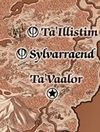Elanthian Flora Guide/Climate Zones
Elanthian Flora Guide: Climate Zones is an Official GemStone IV Document, and it is protected from editing.
Tropical Climate
Much of the tropical climate zone experiences hot and humid weather, with an abundance of rainfall, due to the active vertical uplift or convection of air that takes place. During certain times of the year, rain can occur every day. Nevertheless, this area still receives considerable sunshine, and with the excessive rainfall, provides ideal growing conditions for luxuriant vegetation. Because substantial heat is used up in evaporation and rain formation, temperatures in the tropics rarely move into the extreme range, keeping a constant with slight fluctuations. At night, when the abundant cloud cover forms and restricts heat loss, temperatures fall no lower than a few degrees. This varies little throughout the year. The seasons, so far as they do exist, are distinguished not as warm and cold periods, but by variation of rainfall and cloudiness. Tropical climates are mainly ascribed to islands or regions in equatorial zones.
Subtropical Climate
The subtropical climate is unique in that the wet season coincides with the low sun or winter period. Summers are dry and total annual precipitation ranges somewhere between more than a pitcher-full and less than a trough per year. Temperatures are moderated by maritime influence and fogs associated with the cold ocean currents. The result is a very limited, but predictable, growing season when there is both sufficient soil moisture and adequately warm temperatures. Many plants are adapted to withstand drought. Though the subtropical biome is characterized by shrubs, in most regions these can be evergreens with small, leathery leaves or leaves that are so reduced as to appear needle-like. Many typical members of the shrub flora are aromatic (for example, sage, rosemary, thyme, and oregano) and contain highly flammable oils. This kind of climate would typically be found in areas like Kharam Dzu (Teras Isle) and River's Rest.
Desert Climate
Deserts are areas where the rainfall is so low as to sustain very scanty scrub vegetation, or no vegetation at all. The rainfall in desert areas is less than what might fill a small pitcher per year, and some years may experience no rainfall at all. The hot deserts are situated in the subtropical climate zone where there is unbroken sunshine for the whole year due to the stable descending air and high pressure. Here, maximum temperatures of 105° to 115° are common, although during colder periods of the year, night temperatures can drop to freezing or below due to the exceptional radiation loss under the clear skies. Such areas include the Sea of Fire and the southern wastelands.
Coastal/Semi-Desert Climate
The coastal/semi-desert climate is a special type of climate that describes a regime of hot summer drought and winter rain, and is north of the subtropical climate zone. In summer, the high pressure belts of the subtropics drift in -- coincident with substantially higher temperatures and little rainfall. During the winter, the high-pressure belts drift back out, and the weather becomes more dominated by the rain-bearing low-pressure depressions. While usually mild, such areas can experience cold snaps when exposed to the icy winds of the large continental interiors, where temperatures can drop below freezing for very short periods of time. This kind of climate would typically be found in areas like Solhaven and its environs.
Temperate Climate
Temperate climates are those without extremes of temperature and precipitation (rain and snow). The changes between summer and winter are generally invigorating without being frustratingly extreme. There are two types of temperate climate: maritime and continental. The maritime climate is strongly influenced by the oceans, which maintain fairly steady temperatures across the seasons. Since the prevailing winds are westerly in the temperate zones, the western edge of continents in these areas experience most commonly the maritime climate. Such regions include Wehnimer's Landing and much of the Elven Nations.
Polar Climate
The polar regions are perpetually covered by snow and ice throughout the year. In these high latitude regions, the sun is never high enough in the sky to cause appreciable melting and the temperature rarely rises above freezing. During the long polar nights, which can last several months at the poles, temperatures can fall to extremely low values. Polar climates tend to be dry because the descending air is cold and lacks significant moisture, precluding the formation of clouds and snowfall. Some polar regions receive less than a pitcher of precipitation each year, and can be as dry as hot deserts. The polar region climate is typical of the ice-covered Icemule Trace and Pinefar.
| Elanthian Flora Guide |
|---|
| Climate Zones · Flowers · Grasses · Lichen, Mosses, and Fungi · Low Brush and Bushes · Marine |
| Plants and Herbs · Trees · Vines and Parasitics · A Speech Unspoken: The Language of Flowers |




